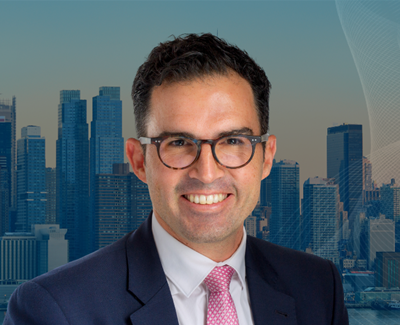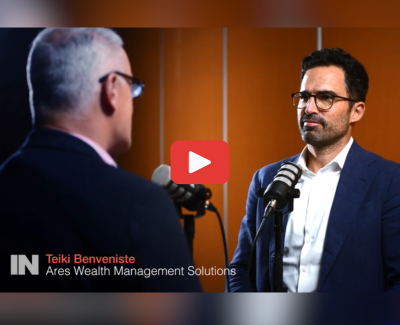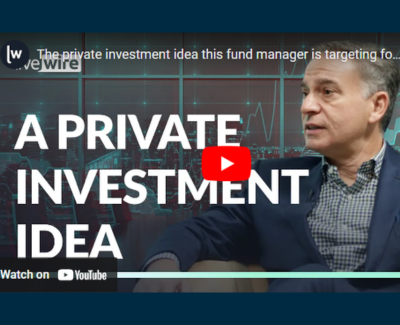Top performing funds: This income fund returned 13.7% in FY24 to be one of Australia’s best
The following was written and published on Livewire on 31 July 2024.
It has a $2 trillion global market. But all anyone wants to know is whether its growth can continue.
It is, without question, the hottest topic in town at the moment. The rise of private credit has been remarkable – 23% CAGR since 2015, according to the IMF. Its promises of big yields, low loss rates, and true diversification as an alternative asset have attracted sophisticated investors of many stripes. For now, the returns don’t lie and many managers have indeed been able to churn out the high single-digit and low double-digit numbers they have promised.
One of those funds is the Ares Diversified Credit Fund. Last year, it returned 13.7%, coming second in Morningstar’s global fixed income managed funds category.
But, as private credit critics will rightly point out, many managers have never worked through a downturn or a huge spike in defaults. There is also a good chance that managers have not worked through a period of high and (still) climbing interest rates, especially if they came into the market post-2008. If the RBA is to commence a second round of rate hikes, then cracks are no doubt going to appear.
So how will private credit managers navigate FY25 amid this outlook? And is there good reason to be as bullish in the coming year as they were in the previous 12 months? To find out, read this interview between myself and Ares’ Teiki Benveniste.
What was the biggest decision you made as a team in the last 12 months from a performance contribution perspective?
One of our biggest decisions was made in mid-2022 when we made the strategic decision to overweight the allocation to U.S. direct lending. As you may recall, central banks were in the middle of an aggressive hiking regime, which led to elevated base rates and a pullback in bank lending. Shortly thereafter, U.S. banks retreated even further following the collapse of Silicon Valley Bank in early 2023.
The combination of higher base rates and reduced bank lending were tailwinds to the asset class given elevated all-in yields and relatively more friendly lender conditions. During this time, we witnessed an uptick in the yield per unit of leverage, an indicator of improved risk-adjusted return.
While there were concerns about the impact of higher borrowing costs, default conditions remained muted and corporate fundamentals were resilient, which contributed to the portfolio’s strong income profile over the last 12 months.
Private credit is an incredibly complex and varied market. What parts of the market, in your opinion, still have room to grow? In contrast, are there any parts of that asset class that now look frothy?
While the private credit market has grown significantly in recent years, we believe there is plenty of room for growth moving forward. If you look at the asset classes in which we invest, we estimate the total addressable market to be $40 trillion. If you exclude liquid credit, that opportunity set is $35 trillion.
A great example of this growth opportunity is U.S. direct lending. While we have the largest global platform in this cohort, our market share is only 2.4%. Further, direct lending dry powder is only 20% of private equity AUM, which implies the direct lending market could more than double before realising the current private equity opportunity.
One area we believe has the most room for expansion is alternative credit or asset-based lending. These are typically investments in large, diversified portfolios of credit assets such as loan portfolios, receivables, leases and royalties, and are structured in a highly defensive manner. We’ve invested significantly in our alternative credit platform in recent years to tap this $28 trillion global market.
While there’s significant room for growth, competition in certain pockets of the direct lending market (e.g., the upper middle market) has increased as M&A activity has not kept pace with a strong demand technical from institutional and retail investors.
While discipline in credit underwriting is always a focus, that emphasis on selectivity becomes enhanced in more heavily trafficked segments of the market. With that said, core to our approach in direct lending is the ability to source opportunities across the middle market, allowing us to benefit from the scaled platform we’ve built and take control positions, which drives incumbency, a key differentiator that accounts for half of our deal flow.
What was your best and worst trade from the last 12 months?
The portfolio has a prominent allocation to liquid credit, which we define as syndicated loans and high-yield bonds, that has been additive over the last 12 months. Both asset classes benefitted from higher rates along with a supportive macroeconomic and corporate fundamental backdrop, which has led to low default rates and spread compression.
As you know, both asset classes have an active secondary market and prices are more sensitive to headlines when compared to other assets in the portfolio.
We view this mark-to-market volatility as an opportunity and actively trade based on where we see the best relative value. For example, towards the end of calendar year 2023, we made a tactical shift by leaning into high-yield bonds when rates hit 5%, which served the portfolio well.
This decision was made as macro volatility led to credit spreads moving wider despite no change to the credit profile of the asset class. We started to add exposure as spreads gapped out and reduced exposure as credit spreads moved sharply tighter toward the end of the calendar year. Generally, the last twelve months have been kind to credit markets, but we’ve had a few idiosyncratic situations that have not met our initial expectations. Thankfully, our emphasis on diversification has mitigated any material impact to portfolio NAV.
What is your outlook for private credit, as an asset class, over the next 12 months?
We believe the backdrop for credit investing will be constructive over the near term – growth remains positive (albeit muted) and inflation data is supportive of central banks lowering policy rates. The go-forward path of rates is perhaps clearer than it has been in recent years, which we expect will be supportive of M&A conditions in the future.
The default environment remains benign and corporate fundamental trends are sound. Top- and bottom-line trends have been positive in recent quarters despite higher borrowing costs. Debt service metrics such as leverage have remained flat and interest coverage ratios are improving, another positive sign for credit investors. That said, credit dispersion is increasing and as such, we remain keenly focused on selectivity.
Tell us about a specific high conviction investment that you have high hopes for in the next year.
Given our emphasis on diversification, we don’t expect any one investment to materially impact the portfolio in the next year. From a relative value perspective, we continue to have high conviction in direct lending as an asset class, particularly with the spread compression we’ve seen in liquid credit.
We expect the allocation in the portfolio to increase as M&A conditions continue to thaw. To that end, our ability to source investment opportunities across the entire middle market will continue to prove beneficial as we expect demand technicals to remain firm.
Further, we believe our incumbency and ability to partner with banks and private equity sponsors alike will support deployment within our opportunistic and alternative credit disciplines, too.
The information in this article has been prepared for wholesale investors only. It is current as at the date of publication and is provided by Ares Australia Management Pty Ltd ABN 51 636 490 732 AFSL 537666 (AAM), the investment manager of the Ares Diversified Credit Fund (ARSN is 644 797 599) (the Fund). Fidante Partners Limited ABN 94 002 835 592 AFSL 234668 (Fidante) is a member of the Challenger Limited group of companies (Challenger Group) and the responsible entity of the Fund. Other than information which is sourced from Fidante in relation to the Fund, Fidante is not responsible for the information in this publication, including any statements of opinion. It is general information only and is not intended to provide you with financial advice or take into account your objectives, financial situation or needs. Investors should consider whether the information is suitable to their circumstances. To the extent permitted by law, no liability is accepted for any loss or damage as a result of reliance on this information. The Information Memorandum (IM) for the Fund, issued by Fidante, should be considered before deciding whether to acquire or hold units in the Fund. The IM can be obtained by calling 13 51 53. Past performance is not indicative of future performance. Any projections are based on assumptions which we believe are reasonable but are subject to change and should not be relied upon. New Zealand investors, please also read important-Information-for-nz-investors
Fidante is not an authorised deposit-taking institution (ADI) for the purpose of the Banking Act 1959 (Cth), and its obligations do not represent deposits or liabilities of an ADI in the Challenger Group (Challenger ADI) and no Challenger ADI provides a guarantee or otherwise provides assurance in respect of the obligations of Fidante. Investments in the Fund are subject to investment risk, including possible delays in repayment and loss of income or principal invested. The performance, the repayment of capital or any particular rate of return on your investments are not guaranteed by any member of the Challenger Group nor AAM or its related bodies corporate. The Fund is available to persons in Australia and New Zealand and is subject to the terms and conditions described in the PDS.


